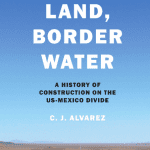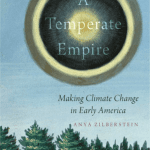by Seth Garfield
For more on the Amazon and its resources in the twentieth century, take a look at these selections.

John Tully, The Devil’s Milk: A Social History of Rubber (2011)
In a social history that spans several centuries and continents, John Tully chronicles the central role of rubber in shaping the modern world through its multiple uses in industrial machinery and consumer goods, as well as its devastating toll on the global workforce that has produced and manufactured it.
Greg Gandin, Fordlandia: The Rise and Fall of Henry Ford’s Forgotten Jungle City (2009)
A finalist for the Pulitzer prize, Fordlandia chronicles how Henry Ford’s megalomaniacal efforts to create rubber plantations and a model American-style company town in the Amazon— to circumvent the British and Dutch colonial Asian monopoly in supplying tires for his automobiles—was doomed by hubris and ignorance toward Amazonian ecosystems and social mores.
Susanna B. Hecht and Alexander Cockburn, The Fate of the Forest: Developers, Destroyers, and Defenders of the Amazon (2011)
A sweeping, historically-informed account of the Amazon that traces the longstanding and varied efforts by outsiders to transform human populations and natural landscapes in the region. The period of authoritarian rule (1964-85) is particularly spotlighted as a watershed in the destructive development of the Amazon: Brazil’s military government, guided by geopolitical doctrines and alliance with both industrial capital and traditional oligarchs, spearheaded highway construction and population resettlement, subsidized the expansion of cattle ranching, and oversaw vast mining operations which would have highly deleterious consequences for the natural environment and traditional populations.
Antonio Pedro Tota, The Seduction of Brazil: The Americanization of Brazil During World War II (2009)
The cultural politics of the Good Neighbor Policy undergirding the Brazilian-American alliance during World War II are explored in this diplomatic and cultural history by Brazilian historian Antonio Pedro Tota. While primarily focused on the public relations activities of Nelson Rockefeller’s Office of the Coordinator of Inter-American Affairs — established in 1940 and tasked with improving U.S. relations with Brazil and other Latin American countries — the book underscores the agency of Brazilian officials in selectively adopting or adapting wartime programs and propaganda for nationalist ends.
David Grann, The Lost City of Z: A Tale of Deadly Obsession in the Amazon (2009)
The unsolved mystery of the disappearance of British explorer Percy Fawcett and his son in the Amazon in 1925, while in search of an ancient lost city, is delightfully recounted by journalist David Gann in an account that blends the genres of biography, detective novel, and travelogue. Fawcett’s “personal” obsessions are historically contextualized within an age of Victorian exploration, scientific racism, and the enduring allure of the Amazon as El Dorado. Although the book’s suspenseful climax does not resolve the enigma surrounding Fawcett’s death, it does suggest that the explorer may ultimately not have been misguided in pursuing the remnants of a great cultural civilization in the Amazon.
Cinema, Aspirins, and Vultures (2005) Directed by Marcelo Gomes
Set in the parched backlands of Northeastern Brazil in 1942, this poignant Brazilian feature film captures the historical saga of hundreds of thousands of residents of the outback confronting natural disaster, economic privation, wartime nationalism, and newfound opportunities to tap rubber in the Amazon, by following the personal odysseys of a German pharmaceutical salesman and a drought refugee.



